I have developed with two or three screens connected to my PC (or laptop – using Matrox’s excellent Dual Head 2 Go) for many years. Like desk space, my view is you cannot have enough screen space to help keep organised and productive.
Recently I took the plunge and purchased a 4K screen from Amazon. Some motherboards have HDMI outputs, which support 4K, but my main PC has not, and as I use multiple screens in any case, I purchased a NVS510 quad port 4K card that can run 4 x 4K screens if necessary. At the moment it is running 3 screens: my 4K screen and two 1920 x 1200 screens on Windows 7.
I chose the screen based on the reputation of the manufacturer and the fact that this screen has many different ports on it, so I can use HDMI to plug my Macbook in, and even split screen between two inputs (doubt I’ll use this I prefer more not less screen space).
The results are amazing the 4K screen is exactly 4 times the screen area of 1920 x 1080 screens, so I could have stopped being greedy and replaced my 3 screens with the one 4K screen and almost gained an additional screen to boot. But its good having one 1920 x 1200 at least because I can get the main Visual Studio window I’m working on up on that screen and really focus on the code in that window.
What I did find was that with Windows 7 the text on the 4k screen was a little on the small side if I didn’t want it to be too big on the 1920 x 1200’s. Windows 8 is better in this respect because it allows you to set your text size individually on each monitor.
Photographs
The images above show a comparison. This blog is shown maximised on the Samsung, with the same size window on the 4K screen alongside.
A More Realistic Development Scenario
An old, but useful podcast on developer hardware and screen space (multiple screens) can be found at Hanselminutes #74.
Links to Hardware mentioned in this Post
N.B. When considering the DualHead2Go, please check your display output on your PC, you may prefer a display port version of this product.
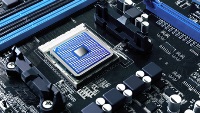
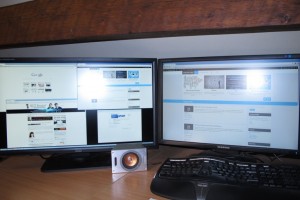
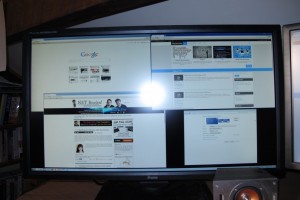
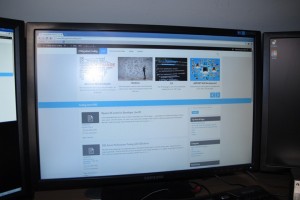
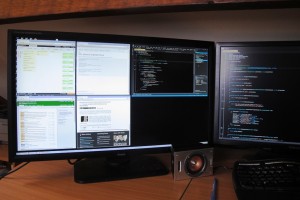
Leave a Reply